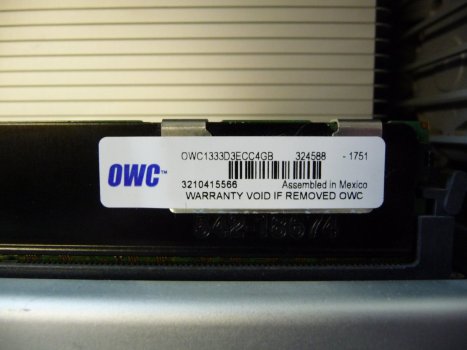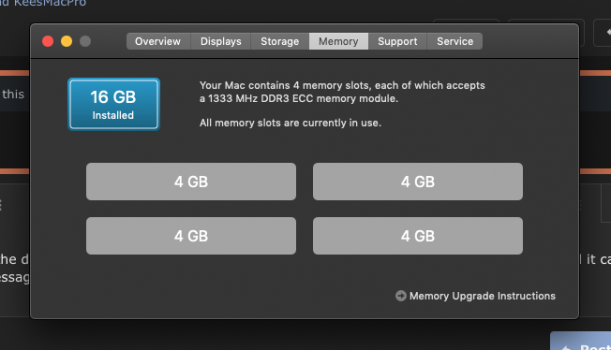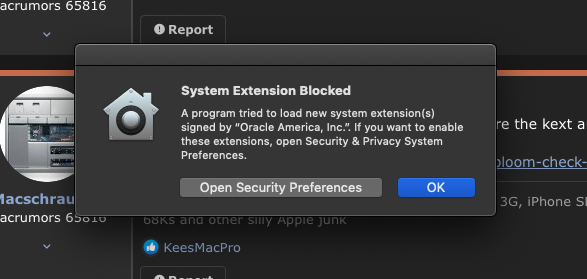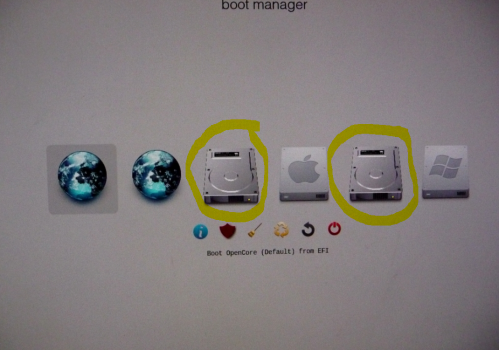Warmboot
no Open Core flavor detected
no latebloom.kext found in kextstat
Timestamp Thread Type Activity PID TTL
Real model decoded from serial number: Mac Pro 2009 (MP4,1)
1 x Intel(R) Xeon(R) CPU X5680 @ 3.33GHz
CKxxxxx920H
NVIDIA GeForce GT 710
running at 10.14.6 18G9323 Kernel 18.7.0
boot-args -no_compat_check
Hardware:
Hardware Overview:
Model Name: Mac Pro
Model Identifier: MacPro5,1
Processor Name: 6-Core Intel Xeon
Processor Speed: 3.33 GHz
Number of Processors: 1
Total Number of Cores: 6
L2 Cache (per Core): 256 KB
L3 Cache: 12 MB
Hyper-Threading Technology: Enabled
Memory: 16 GB
Boot ROM Version: 144.0.0.0.0
SMC Version (system): 1.39f5
SMC Version (processor tray): 1.39f5
System Software Overview:
System Version: macOS 10.14.6 (18G9323)
Kernel Version: Darwin 18.7.0
Network:
Type: PPP (PPPSerial)
Hardware: Modem
Service Order: 0
Type: Ethernet
Hardware: Ethernet
Service Order: 1
Type: Ethernet
Hardware: Ethernet
Service Order: 2
Type: FireWire
Hardware: FireWire
Service Order: 3
Type: AirPort
Hardware: AirPort
Service Order: 4
Type: Ethernet
Hardware: Ethernet
Service Order: 5
Wi-Fi:
Card Type: AirPort Extreme (0x14E4, 0x8E)
Firmware Version: Broadcom BCM43xx 1.0 (5.106.98.102.31)
Storage:
File System: MS-DOS FAT32
BSD Name: disk0s1
Medium Type: SSD
Protocol: PCI
Internal: No
File System: NTFS
BSD Name: disk2s1
Medium Type: SSD
Protocol: SATA
Internal: Yes
File System: Journaled HFS+
BSD Name: disk3s2
Medium Type: SSD
Protocol: SATA
Internal: Yes
File System: Journaled HFS+
BSD Name: disk4s2
Medium Type: Rotational
Protocol: SATA
Internal: Yes
File System: APFS
BSD Name: disk5s1
Medium Type: SSD
Protocol: PCI-Express
Internal: No
File System: MS-DOS FAT32
BSD Name: disk6s1
Protocol: USB
Internal: No
File System: MS-DOS FAT16
BSD Name: disk7s1
Protocol: USB
Internal: No
SATA/SATA Express:
Physical Interconnect: PCI
BSD Name: disk0
File System: MS-DOS FAT32
BSD Name: disk0s1
Content: DOS_FAT_32
Physical Interconnect: SATA
BSD Name: disk3
File System: MS-DOS FAT32
BSD Name: disk3s1
Content: EFI
File System: Journaled HFS+
BSD Name: disk3s2
Content: Apple_HFS
Physical Interconnect: SATA
Physical Interconnect: SATA
BSD Name: disk2
File System: NTFS
BSD Name: disk2s1
Content: Windows_NTFS
Physical Interconnect: SATA
BSD Name: disk4
File System: MS-DOS FAT32
BSD Name: disk4s1
Content: EFI
File System: Journaled HFS+
BSD Name: disk4s2
Content: Apple_HFS
PCI:
Type: NVM Express Controller
Bus: PCI
Slot: Slot-2
Name: NVDA,Display-D
Type: Display Controller
Bus: PCI
Slot: Slot-1
Type: Audio Device
Bus: PCI
Slot: Slot-1
Type: AHCI Controller
Bus: PCI
Slot: Slot-3
NVMExpress:
Apple SSD Controller:
SAMSUNG MZVLW256HEHP-000L7:
Capacity: 256.06 GB (256,060,514,304 bytes)
TRIM Support: Yes
Model: SAMSUNG MZVLW256HEHP-000L7
Revision: 4L7QCXB7
Link Width: x4
Link Speed: 5.0 GT/s
Detachable Drive: No
BSD Name: disk1
Partition Map Type: GPT (GUID Partition Table)
Removable Media: No
Volumes:
EFI:
Capacity: 209.7 MB (209,715,200 bytes)
File System: MS-DOS FAT32
BSD Name: disk1s1
Content: EFI
disk1s2:
Capacity: 255.85 GB (255,850,758,144 bytes)
BSD Name: disk1s2
Content: Apple_APFS
USB:
USB 2.0 Bus:
Host Controller Driver: AppleUSBEHCIPCI
USB 2.0 Bus:
Host Controller Driver: AppleUSBEHCIPCI
USB Storage:
Product ID: 0x070e
Speed: Up to 480 Mb/sec
Location ID: 0xfd300000 / 1
USB Interface: 0
USB Interface: 0
USB Bus:
Host Controller Driver: AppleUSBUHCIPCI
USB Bus:
Host Controller Driver: AppleUSBUHCIPCI
USB Bus:
Host Controller Driver: AppleUSBUHCIPCI
Product ID: 0x4500
Speed: Up to 12 Mb/sec
Location ID: 0x5a100000 / 1
Bluetooth USB Host Controller:
Product ID: 0x8215
Location ID: 0x5a110000
USB Bus:
Host Controller Driver: AppleUSBUHCIPCI
Product ID: 0x1003
Speed: Up to 12 Mb/sec
Location ID: 0x1d100000 / 1
USB Receiver:
Product ID: 0xc52f
Speed: Up to 12 Mb/sec
Location ID: 0x1d120000 / 3
Product ID: 0x020c
Speed: Up to 12 Mb/sec
Location ID: 0x1d130000 / 2
USB Bus:
Host Controller Driver: AppleUSBUHCIPCI
USB Bus:
Host Controller Driver: AppleUSBUHCIPCI
Bluetooth:
Bluetooth Low Energy Supported: No
Handoff Supported: No
Instant Hot Spot Supported: No
Manufacturer: Broadcom
Composite Class Of Device: 0x380104
Connected: No
Class of Device: 0x05 0x25 0x2594
Connected: No
Class of Device: 0x05 0x10 0x2540
Connected: No
Class of Device: 0x05 0x20 0x2580
Memory:
Upgradeable Memory: Yes
Size: 4 GB
Type: DDR3 ECC
Speed: 1066 MHz
Size: 4 GB
Type: DDR3 ECC
Speed: 1066 MHz
Size: 4 GB
Type: DDR3 ECC
Speed: 1066 MHz
Size: 4 GB
Type: DDR3 ECC
Speed: 1066 MHz






